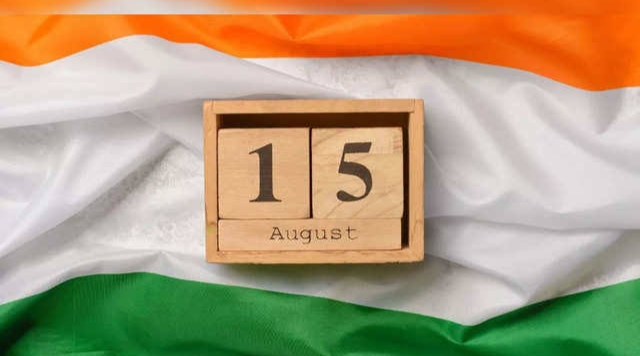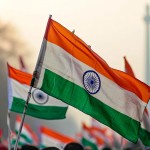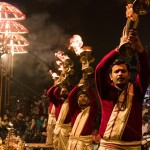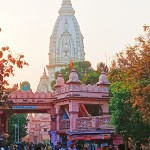India, a nation with a rich history and deep-rooted traditions, celebrates two significant national holidays every year: Independence Day on August 15th and Republic Day on January 26th. Both days hold immense importance in the Indian consciousness, symbolizing the country's struggle for freedom and its commitment to democratic values. However, one might notice a subtle yet significant difference in the way the national flag is presented on these two occasions. On Independence Day, the flag is hoisted, whereas on Republic Day, it is unfurled. This distinction, though seemingly minor, carries profound historical and symbolic meaning.
The Significance of Independence Day
Independence Day is celebrated to commemorate India's liberation from British colonial rule on August 15, 1947. This day marks the end of nearly 200 years of British dominance and the dawn of a new era for the Indian subcontinent. The sacrifices of countless freedom fighters, leaders, and ordinary citizens culminated in the attainment of independence, making this day a symbol of national pride, resilience, and unity.
The celebration of Independence Day is characterized by various ceremonies, cultural programs, and patriotic fervor across the country. The centerpiece of these celebrations is the flag hoisting ceremony, traditionally conducted at the Red Fort in New Delhi, where the Prime Minister of India hoists the tricolor and addresses the nation. This act of flag hoisting holds deep symbolic significance, representing the rise of a free nation and the triumph of Indian identity over colonial oppression.
The Act of Flag Hoisting on Independence Day
Flag hoisting on Independence Day is a ceremonial act that involves raising the national flag to the top of the flagpole from its position at the bottom. The Prime Minister, who represents the executive leadership of the country, carries out this duty as a mark of respect to the nation’s sovereignty and freedom. The act of hoisting the flag symbolizes the dawn of a new era, the emergence of India as an independent state, and the aspirations of its people.
The flag is initially positioned at the bottom of the flagpole, signifying the pre-independence period when India was under colonial rule. As the flag is hoisted to the top, it represents the nation's rise to freedom, independence, and self-governance. The national anthem is played during the ceremony, and the flag is saluted by the assembled dignitaries and the public. The act of hoisting the flag on Independence Day, therefore, is not just a formality; it is a powerful expression of national pride, unity, and the triumph of freedom.
Republic Day: A Celebration of the Constitution
While Independence Day celebrates India's liberation from colonial rule, Republic Day marks the adoption of the Indian Constitution on January 26, 1950. This day signifies the establishment of India as a sovereign, democratic republic where the people are the ultimate source of power. The Indian Constitution, a remarkable document that outlines the framework of the nation's governance, guarantees fundamental rights to every citizen and ensures justice, liberty, and equality.
Republic Day is celebrated with grandeur and patriotic zeal across the country. The main event takes place at Rajpath in New Delhi, where the President of India presides over a grand parade showcasing the nation’s military strength, cultural diversity, and achievements. The unfurling of the national flag is a key part of this celebration, but it is distinct from the flag hoisting that occurs on Independence Day.
The Act of Flag Unfurling on Republic Day
On Republic Day, the national flag is unfurled by the President of India. The process of unfurling the flag is different from hoisting it. The flag is already positioned at the top of the flagpole, folded or rolled up. When the President unfurls the flag, it is simply opened or released to fly freely in the wind. This act of unfurling signifies the reaffirmation of India's commitment to the principles enshrined in its Constitution.
The unfurling of the flag on Republic Day symbolizes the continuity of the Indian state and the values of democracy, justice, and equality that the nation upholds. Unlike Independence Day, where the flag is hoisted to signify the rise of a new nation, Republic Day’s unfurling represents the functioning and preservation of the Indian republic. It is a celebration of the Constitution, the rule of law, and the democratic framework that governs the country.

Why the Distinction Between Hoisting and Unfurling?
The distinction between hoisting the flag on Independence Day and unfurling it on Republic Day is rooted in the historical and symbolic significance of these two events.
- Independence Day: The act of hoisting the flag from the bottom of the pole symbolizes the nation's rise from subjugation to freedom. It reflects the struggle and sacrifices made by millions of Indians to achieve independence. The flag, initially at the bottom, is raised to the top, representing the victory of the Indian people over colonial rule. The Prime Minister, as the head of the government, hoists the flag to honor the leaders of the freedom movement and to remind the nation of its hard-won freedom.
- Republic Day: On the other hand, Republic Day celebrates the establishment of India as a republic with its own Constitution. The flag is already at the top of the pole, indicating that India is now a fully established and functioning state. The President, as the head of state, unfurls the flag to renew the nation’s commitment to the values of the Constitution. The act of unfurling rather than hoisting reflects the stability and continuity of the Indian republic.
Historical Context and the Evolution of Flag Presentation
The tradition of hoisting the flag on Independence Day and unfurling it on Republic Day has evolved over time, shaped by the historical events that led to India’s freedom and the drafting of its Constitution.
- Pre-Independence Flag Ceremonies: Before 1947, flag ceremonies in India were a form of protest against colonial rule. Nationalist leaders and freedom fighters used the Indian flag as a symbol of resistance and defiance. The act of hoisting the flag was a way to assert Indian identity and demand independence from British rule. These ceremonies often took place in defiance of colonial laws, making them acts of courage and patriotism.
- Post-Independence Flag Ceremonies: After gaining independence, the act of hoisting the flag became a formal ceremony, representing the sovereignty and dignity of the Indian nation. The first flag hoisting ceremony on August 15, 1947, marked the official transfer of power from the British to the Indian government. Since then, flag hoisting on Independence Day has become a tradition that reminds the nation of its journey to freedom.
- Adoption of the Constitution: When India adopted its Constitution on January 26, 1950, the nation transitioned from being a dominion under British rule to becoming a fully sovereign republic. The first Republic Day celebration included the unfurling of the national flag by the President of India, signifying the birth of the Indian republic. This act of unfurling, rather than hoisting, emphasized the establishment of the new constitutional order and the values that the nation would uphold.
The Role of the Prime Minister and the President
The distinction between hoisting and unfurling the flag also reflects the different roles of the Prime Minister and the President in India's political system.
- The Prime Minister: As the head of the government, the Prime Minister represents the executive branch of the state. On Independence Day, the Prime Minister hoists the flag to honor the leaders of the freedom movement and to celebrate the nation's independence. The act of hoisting the flag by the Prime Minister also underscores the government's responsibility to uphold the values of freedom and democracy.
- The President: As the ceremonial head of state, the President represents the unity and continuity of the Indian republic. On Republic Day, the President unfurls the flag to reaffirm the nation's commitment to the Constitution and the rule of law. The President’s role in unfurling the flag highlights the symbolic importance of the office as the guardian of the Constitution and the embodiment of the nation’s democratic principles.
Celebrating the Nation’s Journey
Both Independence Day and Republic Day are celebrations of India's journey as a nation. Independence Day marks the beginning of that journey, a time when the country broke free from colonial rule and took its first steps toward self-governance. Republic Day, on the other hand, celebrates the milestones achieved along that journey, particularly the adoption of the Constitution and the establishment of a democratic republic.
The different ways in which the national flag is presented on these two occasions reflect the different stages of this journey. On Independence Day, the flag is hoisted to symbolize the nation’s rise to freedom. On Republic Day, the flag is unfurled to celebrate the nation’s achievements as a sovereign republic.

Conclusion: Honoring India's Legacy
The distinction between hoisting and unfurling the national flag on Independence Day and Republic Day is more than just a matter of ceremonial protocol. It is a reflection of India’s historical legacy, its journey to freedom, and its commitment to democratic values. The act of hoisting the flag on Independence Day symbolizes the nation’s struggle for independence and its emergence as a free state. The act of unfurling the flag on Republic Day represents the continuity and stability of the Indian republic and its dedication to the principles of the Constitution.
As India continues to grow and evolve as a nation, these two national holidays serve as reminders of the country’s rich history and the values that define it. The flag, whether hoisted or unfurled, remains a powerful symbol of the nation’s identity, unity, and aspirations.











